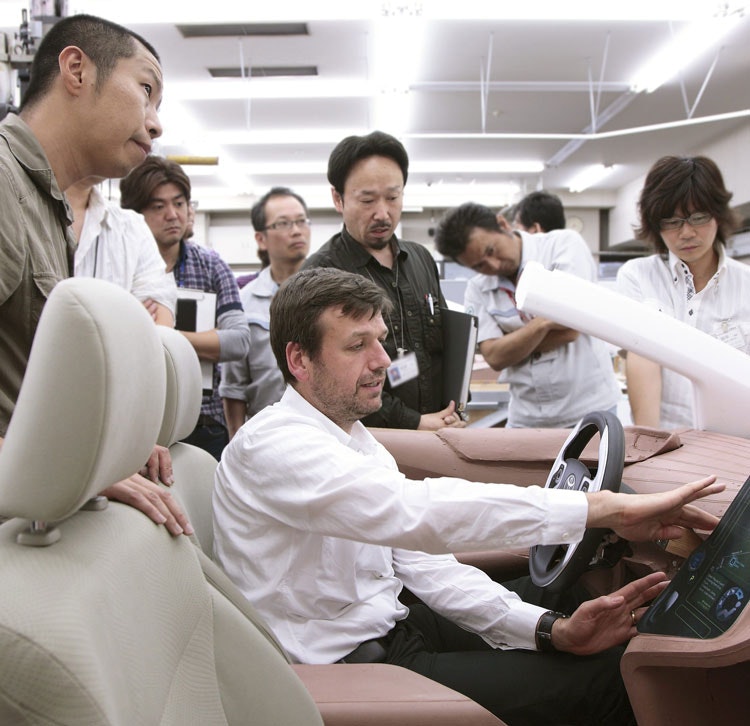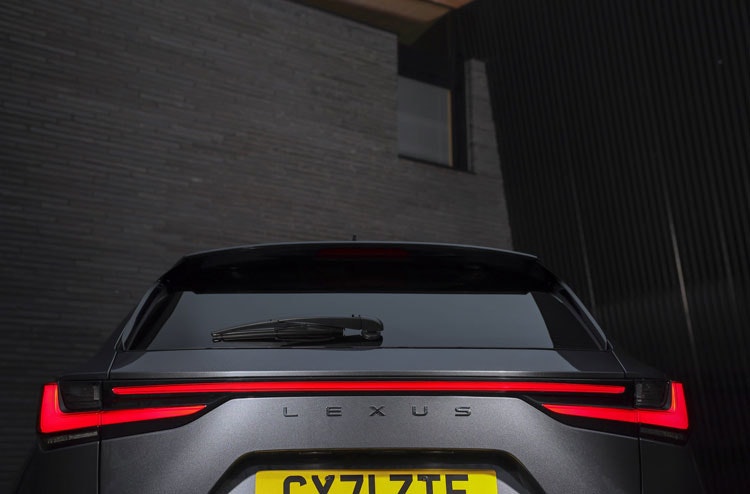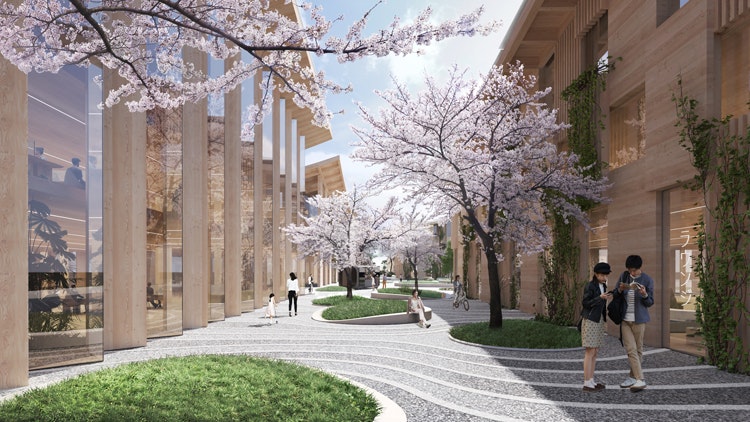To even a casual observer, it’s clear that Lexus has embraced design over the last decade. Its annual design awards, which spotlight young creatives from around the world, has been running since 2013. The luxury car brand also has a presence at international design festivals, most notably at Milan Design Week since 2005. This month, Big Design Challenge debuts – a TV show competition developed by the V&A and Lexus.
It has accompanied a rebuilding of Lexus and its parent company Toyota “from a design perspective” that began over a decade ago, according to Simon Humphries, who heads up design at both car brands.
Humphries joined the company in 1994, and was appointed to oversee the design at both brands in 2018. In that time, he’s attempted to establish a balance between listening to ongoing conversations and following his gut. “I think there is a tendency sometimes to fall one way or the other,” he says. “In other words, not listen to anything.”

How does he maintain that “synergy”, as Humphries calls it, on a day-to-day level? One crucial way is to amplify the opinions of younger designers; he often encourages them to speak before more senior colleagues. That was key in the development of the Lexus NX, a mid-sized SUV which rolled out in the UK in 2014.
A younger team member sketched the model – which aligned well with Lexus’ ambition to be “provocative”, Humphries says – but the non-conforming design proved contentious. His job was to retain the idea’s “initial flair” through back-and-forth conversations (there’s always a danger that the “colour comes out white”, Humphries says). In the end, the design team simply went for it. The NX’s success – it is one of the marque’s most popular models – has validated that approach, he believes.

It’s also key to maintain a diverse line-up of designers. “A lot of companies, not just car companies, put people in silos,” he says. Keeping disciplines together, from interiors to CMF to UX, is especially important in the automotive sector. An interior designer is going to have to consult with a CMF designer on the possibilities and limitations of a particular feature, he explains. In the future, as ideas around mobility develop, that cross-disciplinary approach is only going to increase, according to Humphries.
As for steering the design at both Toyota and Lexus, Humphries has a clear idea about the differences between the brands. With Toyota, he tries to “embrace diversity” among its many models. Lexus has a greater consistency across its models and branding; the marque recently announced it would display a wordmark on the back of all vehicles instead of the logo. Things are shifting for Lexus though. While regional variations still exist – Lexus also has design studios in France and California – there is “less disparity in the design” of models than 30 years ago, Humphries says.
“People are incredibly confident in the way that they consume and choose design”
When it comes to question about future mobility, the answer won’t necessarily have “four tyres”, Humphries believes. In 2020, Toyota announced Woven City, a prototype city where people can “come together to heal, to grow, to learn, and to create new possibilities for a collective future”. A trailer for the site, which is being built at the base of Japan’s Mount Fuji, showed a tree-filled, interconnected world with futuristic vehicles and robots.
Communication design is going to be key in making some of these concepts relatable to people. “We have to be careful about what we say to people and how we say it,” Humphries says, especially at a time when “people are incredibly confident in the way that they consume and choose design”. Autonomous vehicles have one of the biggest image problems. “There’s a large contingent of people who don’t see that as a positive,” he explains, and it’s not hard to see why. Many news stories around self-driving vehicles focus on logistical and safety issues.
Another challenge may be getting traditional drivers on board, those who have an emotional pull to driving. Humphries believes a reframe is needed. Help people understand that self-driving cars enhance the motoring experience – and that it’s not an “all or nothing” situation, he says. Humphries seems optimistic about this challenge. There’s also a lesson to learn from history; he’s keen to avoid a Betamax vs VHS-type war where people feel they have to choose between technologies.
The influence of Japan

At December’s Design Miami festival, Lexus unveiled a sculptural version of its LF-Z electrified concept car. The steel wire installation was very much conceptual – crafted by local designer and architect Germane Barnes – providing an interactive light experience for visitors. It was accompanied by a pair of arched swings, which reference the “gateway between our present and the possibilities of the future”, according to Lexus. Barnes, a Miami resident, explained to Design Week how the project related to the complexities of city’s relationship with cars. Cities may depend on cars, but highways also divide neighbourhoods.
Location is also a big influence on Humphries, who has been living in Japan for over three decades. When he first arrived in the late 80s, it was during the time of the “Japan bubble” – a period where stock market prices were booming. The knock-on effect on tech – particularly in the booming Akihabara electronics district – caught Humphries’ imagination. Japan’s attitudes towards innovation continue to influence his approach to car design, particularly when considering the diverse needs of its drivers.
He believes that the majority of Tokyo locals don’t see a need for private ownership – a feeling that can be seen in the city’s vehicle sharing schemes over the past few decades. Now he sees opportunities to build on that trend to tailor vehicles for specific needs. The car that people want to drive on Monday might not be the car they want to drive on Saturday, for example. Connectivity, and a more elegant way to connect your phone with a vehicle, will be another challenge to overcome, according to Humphries.
“It’s not so easy, design”

Of course, embracing design so publicly doesn’t hurt Lexus’ reputation at a time when car brands have major image problems. For his part, Humphries places great value on the marque’s award programme (he became a judge in 2020) and its role on supporting young talent. “If they choose to work for us in the future, that’s great,” he says. “As a company and a corporation, we’re trying to make a better future.”
He’s also talking from personal experience. In 1988, Humphries won the Royal Society of Arts bursary prize for product design – the prize was a trip to Japan, where he briefly worked for Sony. That prompted his love for the country’s design scene, one that he characterises as “aggressive and forward-looking”. “These types of events of events are incredibly important because they can thrust people in new directions,” Humphries adds.
The new TV show Big Design Challenge may also have a considerable knock-on effect for the perception of design. Young designers will compete in challenges, which will hopefully convey the complexity of the design process to the general public. “People have a tendency to think it’s an easy thing to do,” he says. “But it’s not so easy, design.”

- Design disciplines in this article
- Industries in this article









